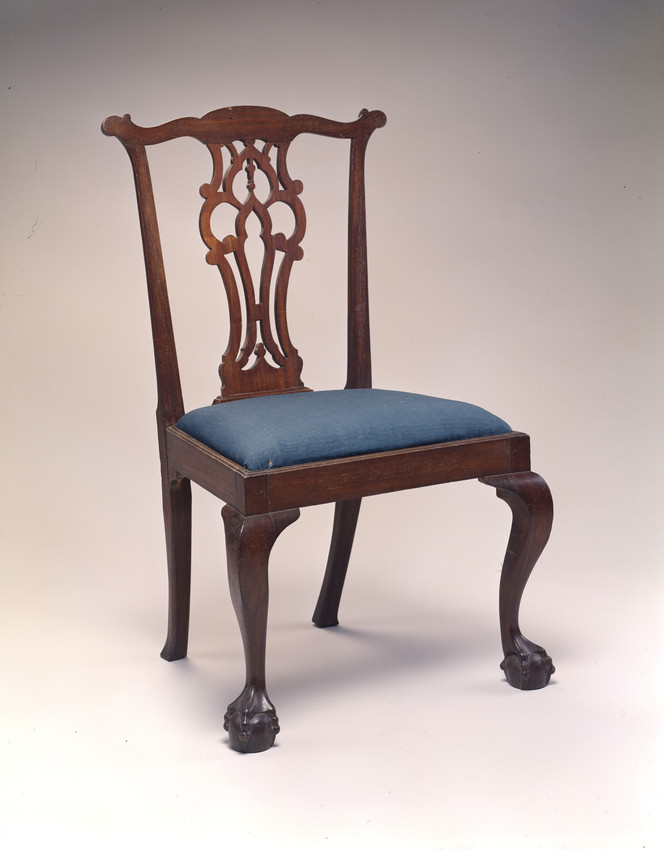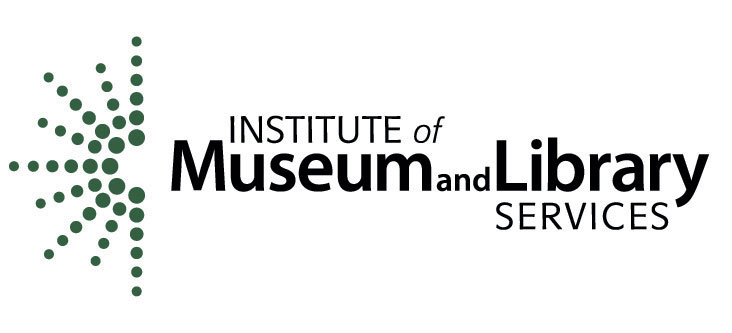
Moving through the stacks and shelves of objects in Historic New England’s Haverhill collections storage facility, I was struck by the impressions of so many bodies. A bracelet implies the curve of the wrist it once encircled. A chair splat hints at all the backs that have pressed against it. Ceramic mugs bear the traces of the lips that touched their rims. Needlework projects are tangible evidence of the repeated puncture of the needle, a hand coaxing thread through fabric. Steve Desroches’s glittering platform shoes conjure images of bodies on a sweaty dance floor. An earthenware vase’s swelling shoulder suggests the hand of the young woman who made it, an Italian or Jewish immigrant and member of the Saturday Evening Girls group. I have always been moved by the traces of human life that objects carry.
Objects are the quiet bearers of history and witnesses to daily life. They speak to many different histories that may not be represented in written records. These objects help us decipher the silences, the glaring gaps, and the active suppressions in written history. We know histories have been written by those with access not only to the tools with which to record their stories, but the resources to preserve them. We can certainly read against the grain in the written record, and we do. But objects tell different kinds of stories. These stories can help us amplify, fill in, complicate, and even transform the narratives that we can find in the written record.
As historian Tiya Miles writes, “even as we recognize that we can never fully access the past… we can draw nearer, and in a different way, to historical actors’ felt meanings by considering their worldly materials.” [1]
A delicate velvet purse from the estate of Jane “Jennie” N. Wigglesworth Grew is in the collection. This purse might be used to tell her story. She was the daughter of an elite Boston family, descended from Nathaniel Goddard. Her father was Edward Wigglesworth and her mother was Henrietta May Goddard. Her daughter, Jane Norton Grew, went on to marry J. P. Morgan. Jane’s family story spans mercantile trade in Shanghai and Manila, banking and railroads across the United States, and the long history of the Harvard-trained Boston elite. The objects in her collection might rightly tell that story. It is one of industry, movement, consolidation, and wealth. But this specific object also suggests another story.
This small velvet purse is decorated with two birchbark lozenges and delicately embroidered with moosehair. This technique and style was developed by Huron-Wendat women and girls living in Wendake, near Lake Ontario. Although moosehair decoration has long been part of Huron-Wendat practice, this particular technique developed out of complex engagements with the Ursuline nuns of Quebec City.



The purse suggests stories about indigenous hybridity, ingenuity, and care. These women and girls transformed imposed colonialist training in “feminine accomplishments” most typically associated with elite white womanhood. Their moosehair embroidery became a source of their own income, meaning, and political power. This purse does not just bear the trace of its owner’s touch and her family’s story of wealth and influence. It also tells the complex story of how its materials came to be assembled, what it meant to its makers, and how it made its way to the collection in 1920.
Objects speak not only to the lives of those who owned them, but those who made them and those whose labor brought their materials together. The curves of a side chair’s cabriole legs tell a story not just about Jonathan Sayward’s fine furnishings and attempts to perform his wealth in the form of a luxurious home, now known as Sayward-Wheeler House, in York Harbor, Maine. They also speak to the diffusion of design techniques in mid-eighteenth century New England, the movement of motifs, makers, and materials, and Sayward’s descendants’ preservation of this object. The chair even has its original upholstery.

This chair speaks also of the people, most likely enslaved, who felled the mahogany wood. Those gleaming legs tell a story of the craftspeople who shaped them. The chair’s presence in New England also suggests the stories of those who transported the wood from the Caribbean or Central America. This chair thus tells us about networks of exchange, labor, and movement. It bears witness to New England’s embeddedness in global processes of extraction and enslavement. Not only did Jonathan Sayward enslave people, but his home also contained objects that illuminate the broad, far-reaching, and often aestheticized tendrils of the trade in bodies, labor, and resources.
Objects in the Library and Archives also tell stories beyond text. In future posts, I plan to share stories contained within the cartes-de-visite collection and the photographic record of the building of the Boston subway, among other records. These are also material objects capable of opening up stories that complicate, fill out, and resist written records. These images are the result of physical processes and moments of encounter. Work and resources went into their making, exchange, and preservation. These stories, too, are embedded within Historic New England’s archives.
As the Recentering Collections Curatorial Fellow, I am thrilled to work with Historic New England’s collections services team. A main goal of the fellowship is to draft a collecting plan geared toward telling diverse and inclusive stories about life in New England. I will also look at Historic New England’s objects and reconsider their connections to suppressed and marginalized voices.
This post offers just a few possibilities for deeper research, tugging on the thread that materials and techniques suggest and seeing where it takes us. We already know that many complicated stories reside in our collections, but this process will unfold many more.
[1] Tiya Miles, “Packed Sacks and Pieced Quilts: Sampling Slavery’s Vast Materials,” Winterthur Portfolio 54, no. 4 (2020): 208.This project was made possible in part by the Institute of Museum and Library Services.
Mariah Gruner is the Recentering Collections Curatorial Fellow at Historic New England
